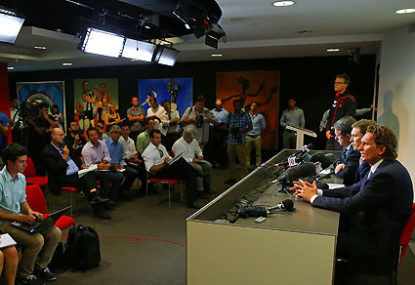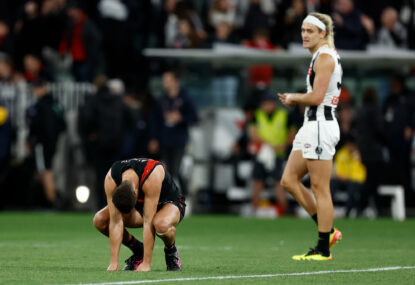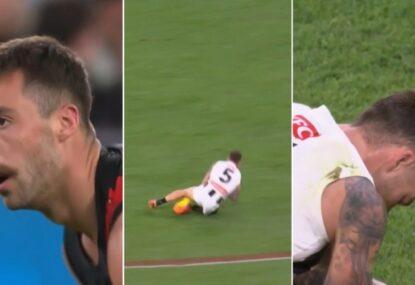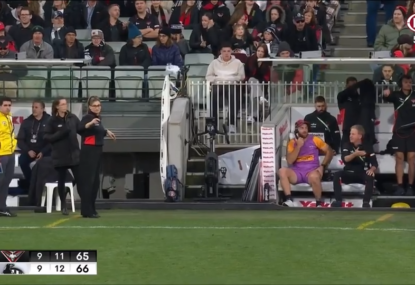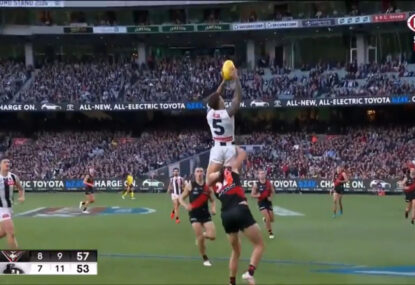Despite the wonderful achievements of western medicine, not all of its practitioners have been fine people.
There have been real-life monsters who performed experiments on unwilling patients.
In sport there have been doctors like Michele Ferrari, and the one briefly employed by my football club who strapped a Paddle Pop stick to my badly broken finger, gave me some morphine for the excruciating pain (caused, my own doctor later advised, by the stick eating into my finger), and skipped off to Thailand for a kickboxing tournament, never to be seen again.
The Hippocratic Oath in its original form is no longer taken by our doctors but modified versions and the AMA Code of Ethics still incorporate – albeit in less colourful language – the most important tenets of the original, such as my favourite: “Whatever houses I may visit I will remain free of all mischief and in particular of sexual relations with both female and male persons, be they free or slaves”.
Essentially our club physicians are dedicated to the health of the players, particularly the vital component of healing.
The sports scientists (the physiologists and physiotherapists) and “fitness gurus” with less formal qualifications play an integral role in player fitness and rehabilitation. But they are also concerned with what is referred to as “high performance”.
This is a goal not necessarily commensurate with health, well being, or anti doping guidelines.
When news broke that the two men at the centre of Essendon’s current drug investigation, the unfortunately named physiologist Steve ‘The Pharmacist’ Dank, and the fitness specialist with the self-invented pornographic moniker, Dean ‘The Weapon’ Robinson, visited a South Yarra medical clinic last year to enquire into methods to “improve the health” of Bombers players (methods that included, among other things, the banned growth hormone stimulant GHRP6), it didn’t look good.
To make matters worse, the clinic director’s criticism of WADA appeared to be motivated by disappointment that his more radical rejuvenation treatments were barred from the lucrative AFL market.
However he did make an interesting ethical point about why players who had deficient hormone levels, as proven apparently by blood tests given to him by Dank and Robinson, weren’t permitted to have them raised by whatever safe means to normal levels?
It does raise the issue of the use of performance-enhancing drugs to restore health, not to cheat.
At the recent AFLPA draftee induction camp, former Western Bulldogs and Richmond champion Nathan Brown told the young group about his year of rehabilitation hell after he snapped his leg in 2005 and his subsequent attempt to return prematurely; a decision that he believes ruined his leg and ended his career.
We now know that during that time he was offered human growth hormone to speed up his recovery. After briefly considering it he rejected the offer out of guilt.
The only player to be banned for testing positive to a banned substance, Richmond’s Justin Charles, said he took an anabolic steroid to recover more quickly from a muscle tear.
Later, when asked if he felt guilty, he replied, “Why would I feel guilt? I felt it ridiculous that you couldn’t use something that is going to help you and get you back on the track quickly.
“I certainly don’t feel guilt about doing something that helped my health. I knew I was running a risk of getting caught and suspended, and I took that risk, but guilt? No, certainly not.”
He then stated that other players admitted to him that they had also taken steroids for injury recovery.
Of course, the experiences of the doped East German athletes in later life raises the important question of when does a PED stop being a health restorer and start becoming a health destroyer?
In his autobiography, Barry Humphries boasts that he has outlived his football-playing former schoolmates – as if achieving abnormally high levels of fitness and playing a contact sport are healthy things to do.
AFL players, even at their physical peak, spend most of their days recovering. Firstly, from the ardous training required to play at the highest level, and then from the debilitating effects of the game.
And then there are those who suffer serious or chronic injury and will try anything legal, no matter how ridiculous it may seem.
Firstly there is the “promising but not proven” Platelet Rich Plasma (PRP) Therapy whereby a quantity of the player’s blood is removed and placed in a centrifuge. The resultant paletelet-rich plasma is then injected into the damaged joint, tendon, ligament, or muscle.
Probably the most dubious last resort would have to be Munich’s Dr Hans-Wilhelm Muller-Wohlfahrt and his magic medicament of Actovegin (a substance banned in the US, derived from the blood of veal calves, and used by Steve Dank on Manly’s 2008 Premiership players) combined with various unspecified “homeopathic substances” injected just about everywhere.
Despite a lack of scientific evidence, the doctor and his patients say the treatment can reduce the recovery period of hamstring tears by up to 70%.
He has the blessing of soccer giant Bayern Munich and superstars like Usain Bolt.
It’s not surprising all at – in light of current events – to learn that James Hird visited Muller-Wohlfart on a fact-finding mission in 2001 with the Essendon fitness staff.
On their return, they were advised by the club’s doctors that Wohlfart was full of shinola.
Hird was a little annoyed then to hear that Geelong’s Max Rooke was treated successfully by the doctor prior to the 2007 finals.
More recently, Richmond’s Dylan Grimes visited Munich last year for a chronic hamstring injury but was later forced to undergo surgery.
As I mentioned in a previous article on Muller-Wohlfart: “To his credit he admits the scientific proof is not yet there (he obviously doesn’t have the desire, energy or capability to find it) and that his strengths lie in the readiness to listen to patients, his injecting technique and his “instinct”.
So no-one, including the doctor himself, knows how it works.
But if it can remove a footballer’s chronic injury rapidly without giving him an extra head, I say go for it!





























































































